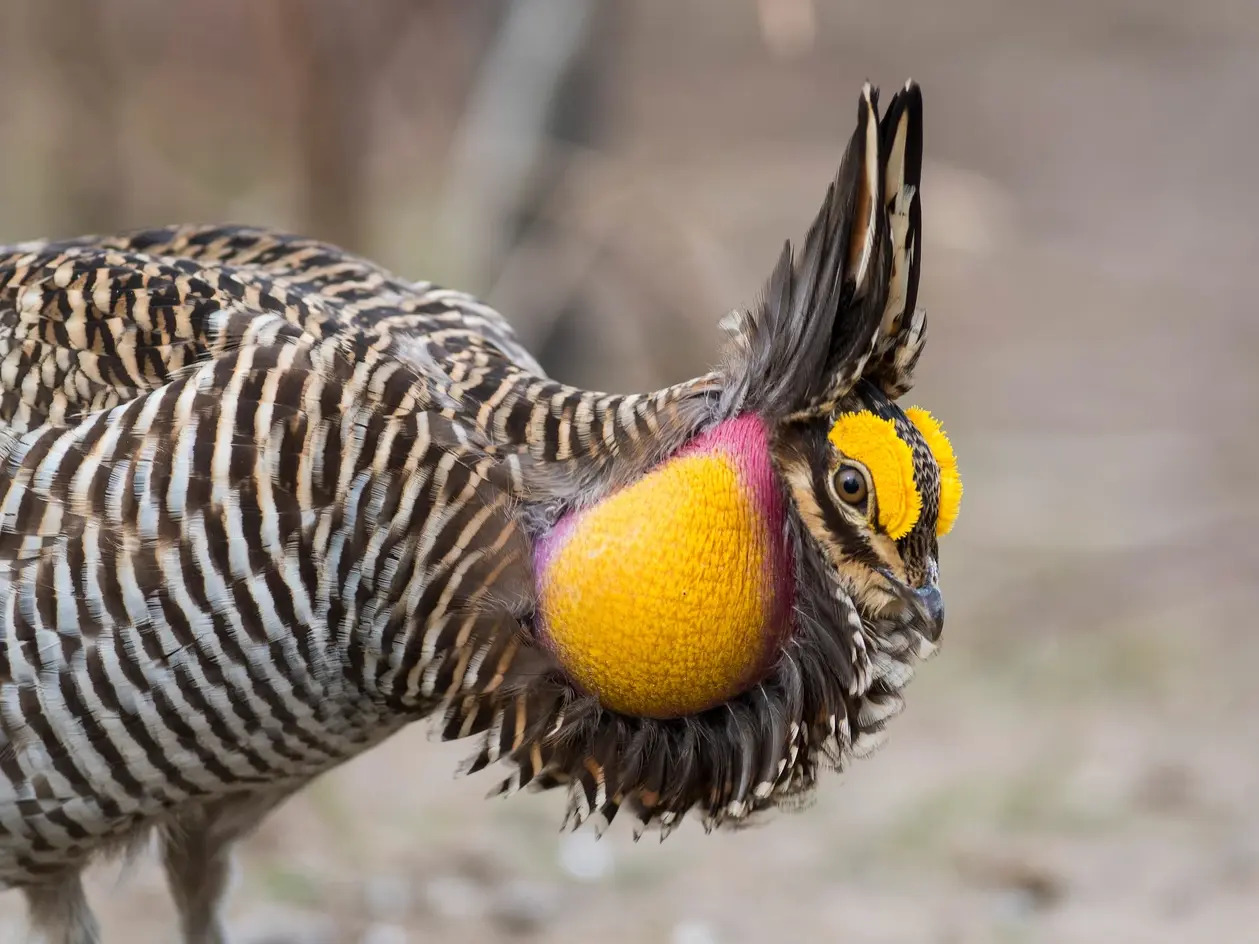
What is a prairie chicken? Prairie chickens are fascinating birds native to North America, known for their unique mating dances and booming calls. These birds belong to the grouse family and thrive in grassland habitats. Why are they important? Prairie chickens play a crucial role in maintaining the health of their ecosystems by controlling insect populations and serving as prey for larger predators. Unfortunately, their numbers have dwindled due to habitat loss and hunting. What makes them special? Their elaborate courtship rituals, where males puff up their feathers and produce distinctive sounds, are a sight to behold. Want to learn more? Dive into these 25 intriguing facts about prairie chickens!
Prairie Chickens: Nature's Hidden Gems
Prairie chickens are fascinating birds often overlooked in the animal kingdom. These birds, native to North America, have some unique traits and behaviors that make them truly special. Let's dive into some intriguing facts about prairie chickens.
Habitat and Distribution
Understanding where prairie chickens live and how they interact with their environment is crucial to appreciating these birds.
-
Prairie chickens are native to North America. They primarily inhabit the grasslands and prairies of the central United States.
-
There are two main species of prairie chickens. The Greater Prairie Chicken and the Lesser Prairie Chicken are the two distinct species, each with unique characteristics.
-
Their habitats are shrinking. Due to agricultural expansion and urban development, prairie chickens have lost much of their natural habitat.
-
They prefer open grasslands. These birds thrive in areas with tall grasses and minimal tree cover, which provide both food and protection from predators.
Physical Characteristics
Prairie chickens have some distinctive physical traits that set them apart from other birds.
-
Males have bright yellow-orange eye combs. These combs become more prominent during the mating season.
-
They possess unique air sacs. Males have orange air sacs on their necks that inflate during courtship displays.
-
Their plumage is well-camouflaged. The brown and white striped feathers help them blend into their grassy surroundings.
-
They are medium-sized birds. Prairie chickens typically weigh between 1.5 to 2.5 pounds and measure around 16-18 inches in length.
Behavior and Social Structure
Prairie chickens exhibit some fascinating behaviors, especially during the breeding season.
-
Males perform elaborate courtship displays. Known as "booming," these displays involve inflating their air sacs, stomping their feet, and making deep, resonant sounds.
-
They gather in leks. During the breeding season, males congregate in specific areas called leks to perform their displays and attract females.
-
Females choose their mates based on displays. The most impressive males are usually selected by females for mating.
-
They are ground nesters. Prairie chickens build their nests on the ground, hidden among tall grasses.
Diet and Feeding Habits
Prairie chickens have a varied diet that changes with the seasons.
-
They are omnivores. Their diet includes seeds, grains, insects, and small invertebrates.
-
Chicks primarily eat insects. In their early weeks, young prairie chickens rely heavily on insects for protein.
-
Adults prefer seeds and grains. As they mature, their diet shifts more towards plant material.
-
They forage on the ground. Prairie chickens spend much of their time searching for food among the grasses.
Conservation Status
Prairie chickens face several threats that have led to declining populations.
-
Greater Prairie Chickens are near threatened. Habitat loss and fragmentation have significantly reduced their numbers.
-
Lesser Prairie Chickens are considered vulnerable. They face similar threats and have experienced even more dramatic population declines.
-
Conservation efforts are underway. Various organizations are working to preserve and restore prairie chicken habitats.
-
Habitat restoration is key. Efforts to replant native grasses and manage land use are crucial for their survival.
Interesting Tidbits
Some lesser-known facts about prairie chickens add to their mystique.
-
They have a unique mating dance. The "booming" display is not only a visual spectacle but also an auditory one, with sounds that can be heard over a mile away.
-
Prairie chickens were once abundant. In the 19th century, their populations were so large that they were a common sight across the Midwest.
-
They play a role in their ecosystem. As both prey and seed dispersers, prairie chickens contribute to the health of their grassland habitats.
-
They have cultural significance. Native American tribes have long revered prairie chickens, incorporating them into dances and folklore.
-
Prairie chickens are resilient. Despite the challenges they face, these birds continue to adapt and survive in changing environments.
Prairie Chickens: Nature's Hidden Gems
Prairie chickens, with their unique behaviors and striking appearances, are truly fascinating. These birds, known for their booming calls and elaborate dances, play a crucial role in their ecosystems. They help maintain the balance by controlling insect populations and spreading plant seeds. Sadly, their numbers have dwindled due to habitat loss and hunting.
Conservation efforts are underway to protect these remarkable creatures. Preserving their habitats and supporting breeding programs can help ensure their survival. By understanding and appreciating prairie chickens, we contribute to the broader goal of wildlife conservation.
Next time you see a prairie, think about the hidden gems like the prairie chicken that call it home. Their survival depends on our actions. Let's cherish and protect these incredible birds for future generations to enjoy.
Was this page helpful?
Our commitment to delivering trustworthy and engaging content is at the heart of what we do. Each fact on our site is contributed by real users like you, bringing a wealth of diverse insights and information. To ensure the highest standards of accuracy and reliability, our dedicated editors meticulously review each submission. This process guarantees that the facts we share are not only fascinating but also credible. Trust in our commitment to quality and authenticity as you explore and learn with us.
